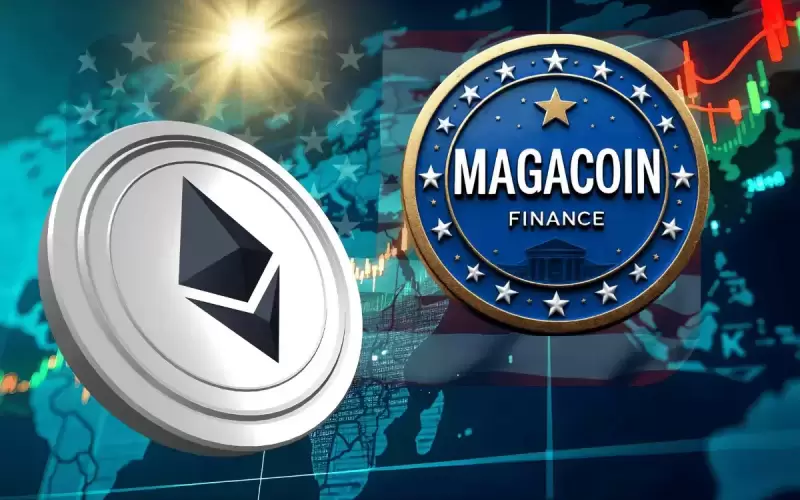 |
|
 |
|
 |
|
 |
|
 |
|
 |
|
 |
|
 |
|
 |
|
 |
|
 |
|
 |
|
 |
|
 |
|
 |
|
請耐心等待,直到今天關於皮特·羅斯的筆記……歡迎來到今天組成捲的三個想法。 《每日污垢》第 1,122 期。

Today’s note includes a surprising fact about coin flips, an installment of Did You Know and a look at some 1940s inventions that are still relevant.
今天的筆記包括一個關於拋硬幣的令人驚訝的事實、《你知道嗎》的一部分以及對 20 世紀 40 年代一些仍然具有相關性的發明的了解。
1. How many times have you and a buddy “flipped a coin,” simply to settle some sort of mild dispute stemming from where to go grab a burger or who will drive to the football game?
1. 有多少次你和朋友「拋硬幣」只是為了解決一些輕微的爭議,例如去哪裡吃漢堡或誰開車去看足球比賽?
Flipping a coin is the most 50-50 opportunity to determine an outcome, right?
拋硬幣最多是 50-50 決定結果的機會,對嗎?
Well, in the words of famed sage Lee Corso, “Not so fast, my friend.”
嗯,用著名聖人李·科索的話來說,“別那麼快,我的朋友。”
While the mechanics of coin flipping are simple enough — guess a side and flip — the physics of how a coin flips are anything but that.
雖然拋硬幣的機制很簡單——猜一面並翻轉——但硬幣翻轉的物理原理卻絕非如此。
By exploring the motion involved, scientists have discovered that coin flips are not as random (and thus impartial) as most of us think.
透過探索所涉及的運動,科學家發現拋硬幣並不像我們大多數人想像的那樣隨機(因此是公正的)。
A 2023 study from the University of Amsterdam flipped 350,757 coins across 46 different currencies and discovered that a coin flipped to its starting position 50.8 percent of the time — close to 50/50, but not quite. In other words, if a coin started heads up, there was a slightly greater chance it would land heads up, too.
阿姆斯特丹大學 2023 年的一項研究翻轉了 46 種不同貨幣的 350,757 枚硬幣,發現硬幣翻轉到起始位置的機率為 50.8%,接近 50/50,但不完全是。換句話說,如果一枚硬幣開始正面朝上,那麼它落地時正面朝上的可能性也會稍大一些。
That study wound up proving a previous theorem, developed in 2004 in another study, that argued that coin tosses landed as they started 51 percent of the time. That small of a difference would likely not dissuade anyone from practicing a coin flip to settle a dispute — but a more serious concern comes from a 2009 report that revealed coin tosses can be easily manipulated with just a few minutes of practice.
這項研究最終證明了 2004 年另一項研究中提出的先前定理,該定理認為,51% 的情況下,拋硬幣會在開始時落地。如此微小的差異可能不會阻止任何人透過拋硬幣來解決爭端,但更嚴重的擔憂來自 2009 年的一份報告,該報告顯示,只需幾分鐘的練習就可以輕鬆操縱拋硬幣。
The bottom line? If you’re relying on the “randomness” of a coin toss to determine an important decision, make sure you can trust the person doing the flipping.
底線是什麼?如果您依靠拋硬幣的「隨機性」來做出重要決定,請確保您可以信任拋硬幣的人。
And if you can’t decide on which person to perform the act? Well … just flip a coin, of course.
如果您無法決定由誰來執行該操作怎麼辦?嗯……當然,只是拋一枚硬幣。
2. Did you know (Part 195)
2.你知道嗎(第195期)
Did you know that the first computer virus was created in 1981 by a 15-year-old high school student from Wisconsin? The virus, called Elk Cloner, was designed to spread through Apple II computers via floppy disks and was intended as a harmless prank. However, the virus ended up causing significant damage to some users' computers, leading to its creator's eventual arrest.
您是否知道第一個電腦病毒是由威斯康辛州一名 15 歲高中生於 1981 年創建的?該病毒名為 Elk Cloner,旨在透過軟碟在 Apple II 電腦中傳播,其目的是作為一種無害的惡作劇。然而,該病毒最終對一些用戶的電腦造成了嚴重損害,導致其創建者最終被捕。
3. Some 1940s inventions that are still relevant:
3. 一些 20 世紀 40 年代的發明仍然具有現實意義:
The 1940s was a decade of great technological innovation, with many inventions that are still relevant today. Here are a few examples:
20 世紀 40 年代是偉大技術創新的十年,許多發明至今仍具有現實意義。以下是一些範例:
• The ballpoint pen was invented in 1943 by Hungarian-Argentine inventor László Bíró. Before the ballpoint pen, people used fountain pens, which were often messy and unreliable. The ballpoint pen quickly became popular for its convenience and ease of use, and it is still one of the most common writing instruments today.
• 原子筆由匈牙利裔阿根廷發明家拉斯洛·比羅 (László Bíró) 於 1943 年發明。在原子筆出現之前,人們會使用鋼筆,鋼筆通常很混亂且不可靠。原子筆因其方便易用而迅速流行起來,至今仍然是最常見的書寫工具之一。
• The microwave oven was invented in 1946 by American engineer Percy Spencer. Spencer was working on a radar project when he noticed that a candy bar in his pocket melted. He realized that the microwaves from the radar were heating the candy bar, and he began to experiment with using microwaves to cook food. The first commercial microwave oven was sold in 1954, and microwaves are now a common appliance in kitchens around the world.
• 微波爐於1946 年由美國工程師Percy Spencer 發明。史賓塞正在研究一個雷達項目,當時他注意到口袋裡的一塊糖果融化了。他意識到雷達發出的微波正在加熱糖果,於是他開始嘗試用微波爐來烹調食物。第一台商用微波爐於 1954 年售出,如今微波爐已成為世界各地廚房中常見的電器。
• The computer was invented in the 1940s by a team of scientists at the University of Pennsylvania. The first computer, called the ENIAC (Electronic Numerical Integrator and Computer), was massive, taking up an entire room and weighing 30 tons. However, the ENIAC was capable of performing calculations that would have taken a human team months to complete by hand. Computers have since evolved dramatically, becoming smaller, faster, and more powerful, and they are now used in a wide variety of applications.
• 電腦是 20 世紀 40 年代由賓州大學的一群科學家發明的。第一台計算機稱為 ENIAC(電子數值積分器和計算機),體積龐大,佔據整個房間,重達 30 噸。然而,ENIAC 能夠執行人類團隊需要數月才能手動完成的計算。此後,電腦發生了巨大的發展,變得更小、更快、更強大,並且現在被用於各種各樣的應用。
免責聲明:info@kdj.com
所提供的資訊並非交易建議。 kDJ.com對任何基於本文提供的資訊進行的投資不承擔任何責任。加密貨幣波動性較大,建議您充分研究後謹慎投資!
如果您認為本網站使用的內容侵犯了您的版權,請立即聯絡我們(info@kdj.com),我們將及時刪除。
-

- 賺取比特幣和山寨幣的前6個免費云挖掘平台
- 2025-04-03 13:55:12
- 隨著比特幣和Altcoins繼續主導金融景觀,免費的雲挖掘平台已成為革命性的工具
-

- 隨著鯨魚累積蘸醬,Pendle Coin(Pendle)價格飆升6.8%
- 2025-04-03 13:55:12
- 在比特幣激增的$ 85,000之後,加密貨幣市場正在4月初獲得恢復勢頭。
-

- 在解放日關稅公告後,DXY再次下降。
- 2025-04-03 13:50:12
- 澳元大,大,然後做得很少。鉛靴今天將很有趣。黃金到月球。油頂。
-

-

-

-

- 由於造成的錯誤,一群林肯便士價值數千美元。
- 2025-04-03 13:40:12
- 今天,硬幣的一些極少數變化可能正在流通,找到一個可以帶給您大筆錢。
-

-

- 瓜達錢包評論:最好的比特幣錢包和總體最好的加密錢包
- 2025-04-03 13:35:13
- 如果您想變得環保,您需要做很多事情。如果您使用加密貨幣,這將變得更加困難。




























































